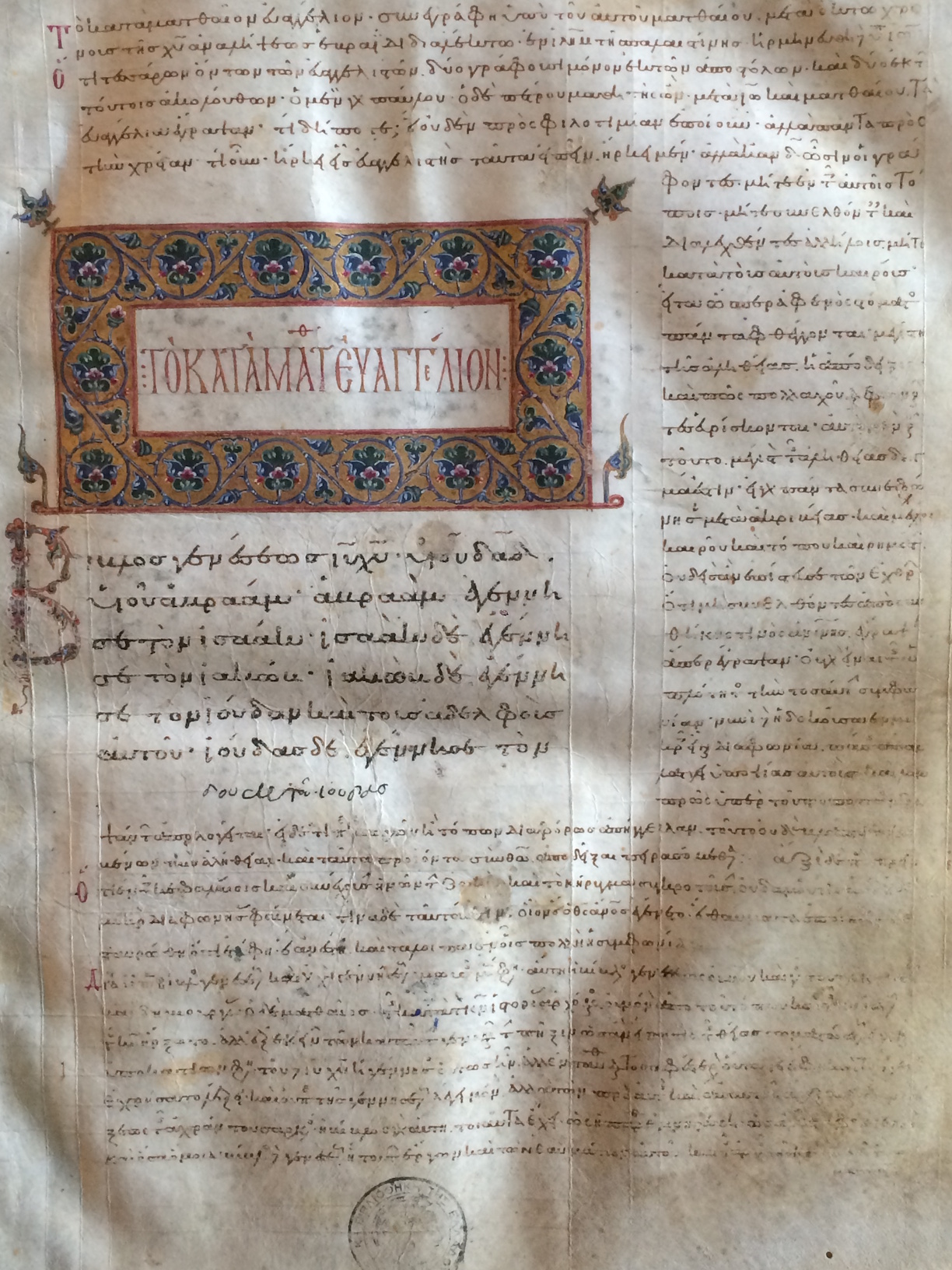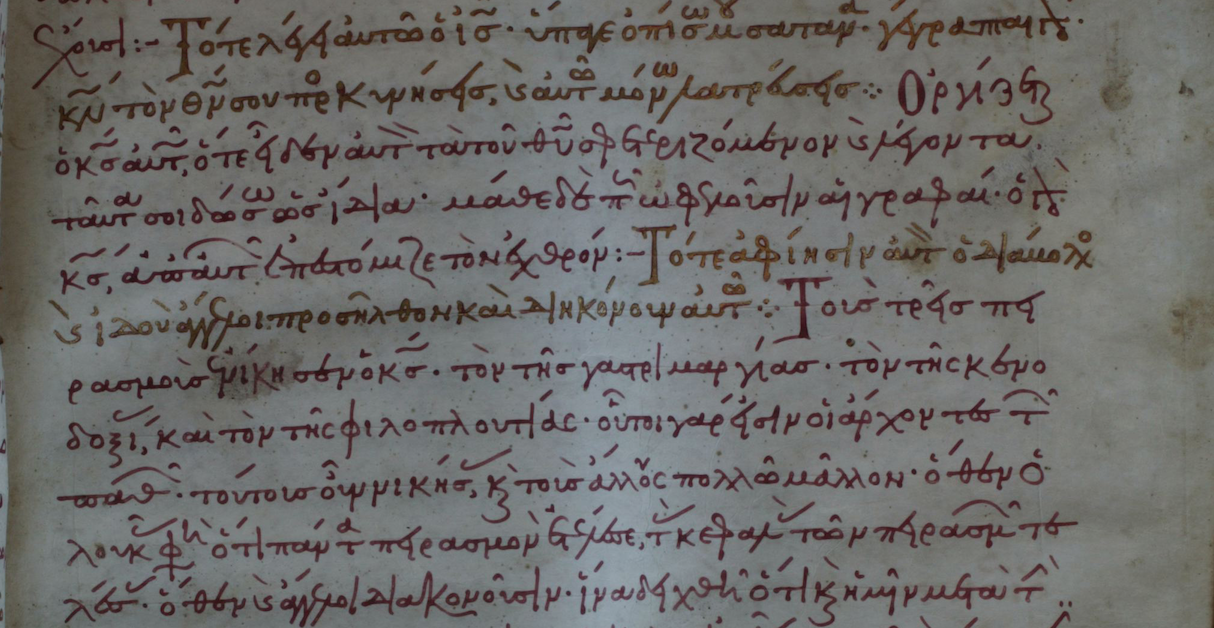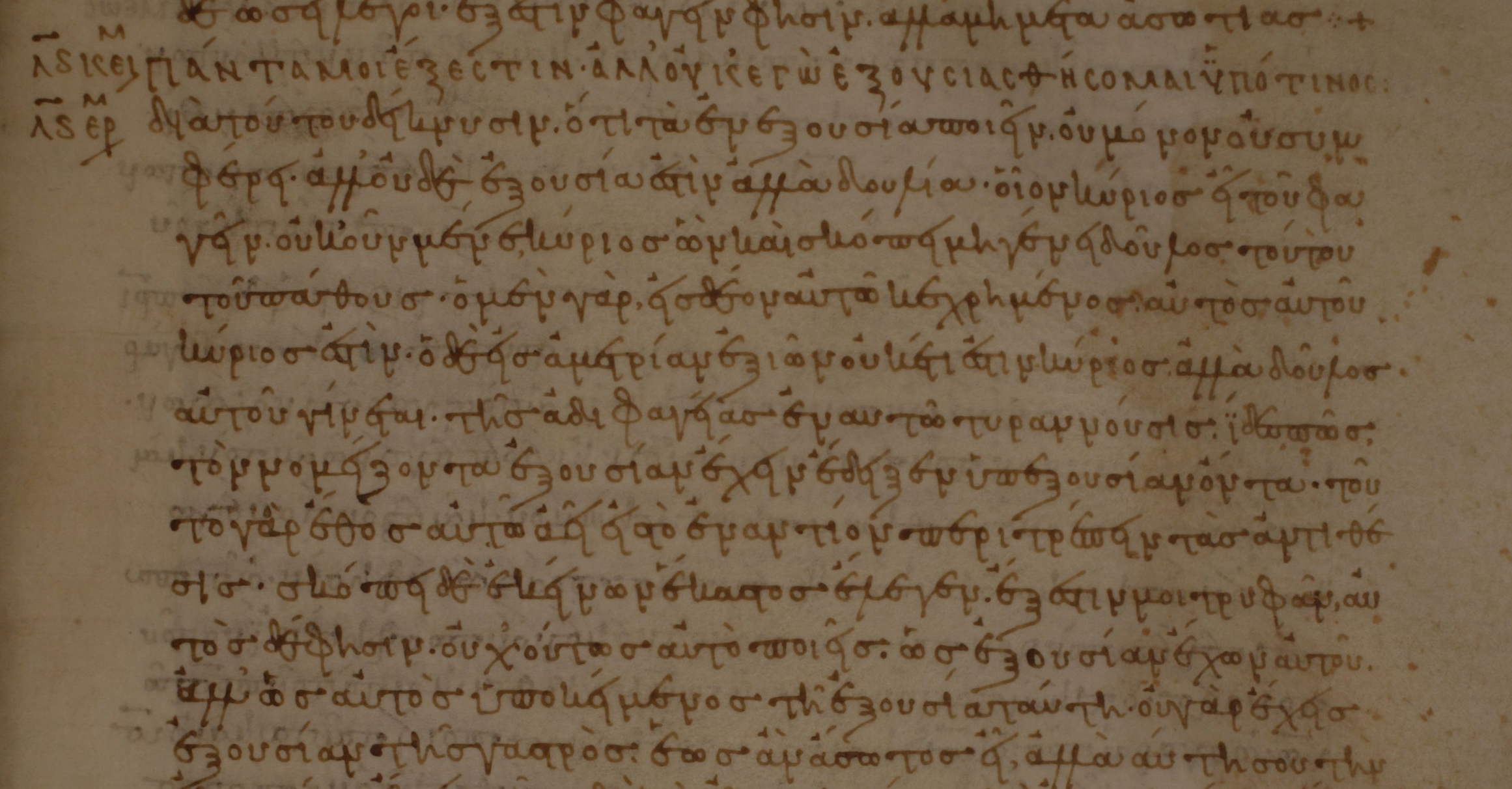Daniel B. Wallace
26 February 2015
I don’t know how many handwritten Greek New Testament manuscripts (MSS) I’ve had the privilege of looking at in the last two or three decades. It’s at least in the hundreds and probably more than a thousand by now. And presently, I am looking at quite a few more at the National Library of Greece in Athens. CSNTM will be shooting all the NT manuscripts here in 2015 and 2016. That’s about 300 manuscripts with almost 150,000 pages of text. It’s a daunting task! And all of these images will be available at CSNTM. They will be free for all, and free for all time.
I’ve been pondering an aspect about NT manuscripts that I thought would be good to share with others. It has to do with commentaries. You see, many of our biblical manuscripts have commentaries written by church fathers included within the codex. Scholars are aware of about one dozen such manuscripts in which the NT text is written in majuscules or capital letters. Majuscules are what all of our oldest NT manuscripts are written in. Beginning in the ninth century, scribes began to write in minuscule, or cursive, letters. Minuscule manuscripts could be written much more rapidly and in a more compact space than their capital letter counterparts. By the twelfth century, virtually all the Greek NT manuscripts were minuscules. Quite a few of these later MSS included commentaries.
Over the years, I’ve examined such commentary MSS to prepare them for digitization. And here’s what I have discovered.
These MSS come in a variety of formats. Probably the most common one is for the text to be in larger script and centered on the page, with commentary wrapping around it on three sides (top, bottom, and outside of the leaf). Another format is to have the biblical text in one color of ink with the commentary in a different color. The color of ink for the biblical text is almost always a more expensive ink; one or two MSS even use gold ink for the scriptures. A third format is to have the NT written in capital letters and the commentary in minuscule. And finally, some MSS have an introductory symbol to the biblical text such as an asterisk or simple cross to set it off from the commentary.
Below are images of some examples of these varieties:

Biblical text centered and in larger script with wrap-around commentary

Gold letters for scripture, red letters for commentary

Capital letters for scripture, cursive for commentary
There is a common theme through all of these varieties: the biblical text is prominent, considered of greater importance than the commentary. These ancient and medieval scribes understood the significance of scripture and made sure to highlight it over comments about it. I am reminded of a quip one of my professors used to make: “It’s amazing how much light the text sheds on the commentaries!” Indeed, the refrain of focusing on the text, of constantly putting before the reader what is of the greatest importance, is a hallmark of these manuscripts!
This is not to say that these commentaries were unimportant. No, they were vital for the communities of faith. Christians then, as now, wanted to know how to understand the Bible, and the scribes did well to reproduce the reflections on scripture of the great thinkers in the history of the Church. But on balance, we would do well to remember that the scriptures were front and center and the scriptures were the main focus of these scribes. To these anonymous workers, who labored in adverse conditions, we owe a large debt of gratitude.
If you want to help preserve manuscripts please make a donation.

Dear Daniel,
I can’t say how much I appreciate this amazing free gift of CSNTM to scholarship. Thank you for all your own hard work on the project.
I was interested to read your quote from your professor on the commentaries, as I read it just after noticing that in minuscules 1 and 118 in the commentary(?) on Mark 14.51, the verb efugon has been hijacked from the story about the young man and applied to the disciples.
Have you often come across that kind of ‘reconstruing’ of the text?